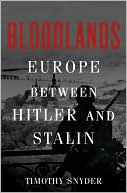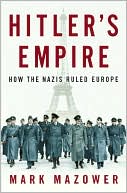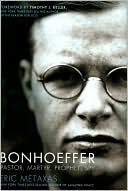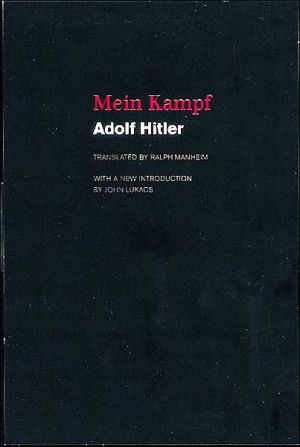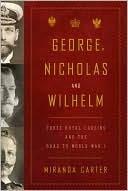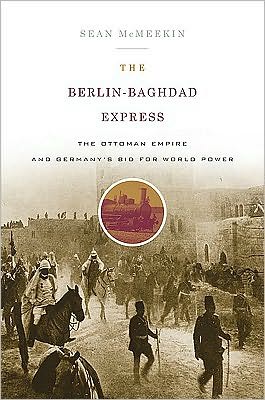Catastrophe and Meaning: The Holocaust and the Twentieth Century
How should we understand the relation of the Holocaust to the broader historical processes of the century just ended? How do we explain the bearing of the Holocaust on problems of representation, memory, memorialization, and historical practice? These are some of the questions explored by an esteemed group of scholars in Catastrophe and Meaning, the most significant multiauthored book on the Holocaust in over a decade. \ This collection features essays that consider the role of anti-Semitism...
Search in google:
How should we understand the relation of the Holocaust to the broader historical processes of the century just ended? How do we explain the bearing of the Holocaust on problems of representation, memory, memorialization, and historical practice? These are some of the questions explored by an esteemed group of scholars in Catastrophe and Meaning, the most significant multiauthored book on the Holocaust in over a decade.This collection features essays that consider the role of anti-Semitism in the recounting of the Holocaust; the place of the catastrophe in the narrative of twentieth-century history; the questions of agency and victimhood that the Holocaust inspires; the afterlife of trauma in literature written about the tragedy; and the gaps in remembrance and comprehension that normal historical works fail to notice.Contributors:Omer Bartov, Dan Diner, Debòrah Dwork, Saul Friedländer, Geoffrey Hartman, Dominick LaCapra, Paul Mendes-Flohr, Anson Rabinbach, Frank Trommler, Shulamit Volkov, Froma Zeitlin
Catastrophe and Meaning: the Holocaust and the Twentieth Century\ \ By Eric L. Santner \ University of Chicago Press\ Copyright © 2003 Eric L. Santner\ All right reserved.\ ISBN: 0226676110 \ \ \ One - IDEOLOGY AND EXTERMINATION: THE IMMEDIATE ORIGINS OF THE "FINAL SOLUTION" \ \ Saul Friedlander \ \ On October 2, 1941, Operation Typhoon, the final German assault on Moscow, was launched. In his order of the day to the millions of soldiers poised for what was supposed to be "the last of the great decisive battles of the year . . . the last powerful blow that will shatter this enemy before the onset of the winter," Hitler made quite clear who was the "horrendous, beast-like" enemy intent on "annihilating not only Germany, but the whole of Europe." The carriers of the system in which Bolshevism was but the other face of the vilest capitalism, he proclaimed, were in both cases the same: "Jews and only Jews!" [Juden und nur Juden]\ \ As a new phase of the war started with the German attack against the Soviet Union, a radical escalation of "the war against the Jews" unfolded on Russian territory. In this new phase, early or mid-October 1941 appears as another fateful turning point. It was probably between mid-October and mid-December 1941 that the final decision regarding the murder of the whole of European Jewry was taken. \ \ As we consider these events from a distance of six decades, their historicalplace still remains undetermined. Was this the horrendous finale of an anti-Jewish tradition embedded in the evolution of Christianity and that of the Western world? Was it the murderous end phase of the age of ideology? Does it demonstrate the deadly potential of modernity? Or, could one define the annihilation of European Jewry as the result of an entirely unforeseeable convergence of these three historical developments within a specific German context? \ \ This text will mainly concentrate on the fall months of 1941; they have probably been more systematically scrutinized than any other phase of these events, and no new facts will be uncovered here. Rather, I wish to reemphasize, against the grain of present-day historiography, the importance of Hitler's initiatives and of his ideology in the context of the anti-Jewish crusade. I shall stress the pseudoreligious dimensions of this ideology--redemptive anti-Semitism--and its integrative and mobilizing function within a system including Party, State, and society. More generally, I shall attempt to point to the place of this ideology in the conflation of the three historical processes mentioned above with the immediate circumstances that triggered the onset of the most extreme enterprise of sustained, systematic mass extermination in modern history. \ \ "REDEMPTIVE ANTI-SEMITISM" \ \ "Redemptive anti-Semitism" is the most radical form of anti-Jewish hatred. It is the convergence of racial anti-Semitism on the one hand and of a religious or pseudoreligious ideology of redemption (or perdition) on the other. Whereas racial anti-Semitism in general was but one element within a wider racial world-view, redemptive anti-Semitism constituted an all-encompassing belief system in which race rationalized the struggle against the Jews but was not the only foundation of it. Moreover, in redemptive anti-Semitism the struggle against the Jews took on an apocalyptic dimension. The redemption of the Volk, the race or Aryan humanity, would be achieved only by the elimination of the Jews. The victory of the Jews remained a possibility: it would mean the end of the Volk, the race or Aryan humanity. \ \ In Nazi Germany and the Jews I made a clear distinction between this extreme brand of anti-Semitism and "ordinary" volkisch anti-Jewish ideology. It seemed to me that the convergence of the racial anti-Semitic themes and of the redemption of an Aryan Christian humanity by the struggle against and the victory over the Jews found its ideological underpinnings in late nineteenth-century Germany, particularly in the "Bayreuth Circle." As the historian of the Circle expressed it: "It is in the nature of anti-Semitic ideology to use a more or less prominent friend-foe model. What nonetheless gives Bayreuth's anti-Semitism an unmistakably particular aspect is the resoluteness with which the opposition between Germandom and Jewry is raised to the position of the central theme of world history. In Chamberlain's Foundation [of the Nineteenth Century] this dualistic image of history finds its tersest formulation." In end-of-the-century Bayreuth and later, Houston Stewart Chamberlain's thought was indeed dominant; it strongly influenced the Munich anti-Jewish ranter and Bayreuth devotee Dietrich Eckart, who in turn became Hitler's early and most influential ideological mentor. \ \ Shortly after the beginning of his political career, Hitler came to see himself as the messianic figure chosen by Providence to lead Germany in this fateful battle. According to his own words in Mein Kampf, in defending himself against the Jew he was fighting for the work of the Lord. \ \ Very tentatively and only a priori at this stage, one could suggest the following link between "redemptive anti-Semitism," the Christian tradition, the era of ideology, and modernity. In the final stage of the era of ideology, the two hegemonically oriented worldviews of the century, Nazism and Communism, surged on the world scene as pseudoscientific constructs and as millenarian utopias. These political religions mobilized the deepest fears and hopes of the Christian tradition, particularly its apocalyptic dimension: the vision of a struggle against a demonic force that, in Nazism, became "the Jew." But, whereas a concept such as "redemptive anti-Semitism" is easily included in a synthesis of twentieth-century ideology and deep-rooted millenarianism, it seems ill suited to an approach that identifies Nazism with modernity. Are we thus facing two incompatible and basically opposed interpretive approaches? \ \ According to the leading thesis which links Nazi exterminations and modernity, the "Final Solution" was born from "the spirit of science" as an aspect of rationally pursued "social therapies" generated at the end of the nineteenth century, which led to more extreme corollaries in the 1920s, in the wake of war and crisis, and assumed their most radical form under the Nazi regime. From this perspective, the anti-Jewish measures of the Nazis become part of a general biological-racial selection plan. After the beginning of the war, these policies were integrated by various, often competing Nazi agencies in a systematic program of ethnic population relocation and elimination embracing the whole of eastern Europe, in order to strengthen the Germanic racial core. According to this interpretation, the extermination of the Jews was mainly the outcome of biological and demographic-economic planning, similarly directed against the mentally ill, the gypsies, and, potentially, other groups defined as "asocials" or racially inferior by Nazi criteria. In the longer run, this kind of rationality could have led to the mass transfer and killing of entire populations all over eastern Europe, as outlined in the Generalplan Ost. Thus explicated, Nazi exterminations were essentially the product of a pitiless instrumental rationality, in terms of racial-demographic plans or, for that matter, in line with more immediate military needs. \ \ Thus, for example, the extermination of the Jews on Soviet territory did possibly accelerate as a result of the Wehrmacht's food supply problems; the annihilation in the Warthegau may have been triggered by the overfilling of the ghettoes and the need to resettle incoming ethnic Germans; the general concept of mass liquidation of Jews in the Eastern territories may have been indirectly influenced by some Nazi demographic-economic planning for the entire area. Yet, neither these explanations nor any other schemes based on the same type of "instrumental rationality" apply to the deportations of the Jews from western Europe immediately after total extermination in the East began, or to the deportations from Norway, Saloniki, or the island of Rhodes. \ \ It has also become common to equate Nazism and its crimes with basic utopias of modernity beyond "the spirit of science" as such. More specifically, the goal supposedly pursued by the Nazis was "the utopian aim of transforming society in the image of perfection," or, in other terms, the realization of "a social homogeneity and social identity endemic to the Western ideal of a rational society." This identification of Nazi goals with quintessential visions of modernity is highly questionable. By definition these goals should have applied to the domain of the Volksgemeinschaft only. And, indeed, no attempt was made to kill the mentally ill or to jail the "asocials" in the occupied countries. This racial "sanitation" was concentrated in Germany only and in the areas annexed to Germany. Only one group was hounded all over the continent, to the very last individual, to the very last day of German presence: the Jews. These diverging policies against various groups of victims suffice to indicate that the war against the Jews was only indirectly related to the transformation of the Volksgemeinschaft in the image of racial perfection. \ \ Finally, the equation of Nazism and modernity is based on an ongoing confusion between the "modernist" utopias of middle range Nazi racial theorists, scientists, bureaucrats, and intellectuals of various brands and a political religion identifying the Jews as the enemy of humankind, preached by the ultimate bearer of all authority: Adolf Hitler. His message may not have been shared by all, but his were the guidelines for the policies of total extermination. \ \ Thus we are brought back to a peculiar brand of apocalyptic anti-Semitism, the extraordinary virulence of which remains the only way of explaining both the physical onslaught against all Jews living within German reach and against any part of human culture created by Jews or showing any trace of the Jewish spirit. \ \ Physically separating Jews from Aryans may have fitted into a racial-biological vision of humanity, but separating Jewish authors from Aryan ones, or Jewish from Aryan science, Jewish from Aryan music, and so on, belongs to a different kind of obsession. The evolution of Nazi euthanasia may explain how the methods and the "specialized" personnel for the killing of the mentally ill were utilized in the extermination of the Jews, but the connection between these logistics of mass murder and the elimination of libretti by Jewish authors from operas performed in the Reich or the identification of Heinrich Heine as an "unknown poet" demands a different historical framework. What is ultimately so difficult to grasp in National-Socialism is precisely the fact that the Jewish issue was its ideological core. The Jewish diarist Victor Klemperer expressed this unequivocally on April 16, 1941: "Once I would have said: I do not judge as a Jew.... Now: Yes, I judge as a Jew, because as such I am particularly affected by the Jewish business in Hitlerism, and because it is central to the whole structure, to the whole character of National Socialism and is uncharacteristic of everything else." \ \ In other words, Hitler's goals, mainly his vision of an apocalyptic final struggle against the Jews, were metapolitical. This vision invested the core of his movement with the fervor of a crusading sect. But, as we shall see, the Nazi leader knew how to "translate" his metapolitical aims into modern politics, modern organization, modern concepts. Far more than in Communism, this peculiar fusion of seemingly distinct worlds gave to the regime both its fanaticism and its deadly efficiency. \ \ HITLER'S RHETORIC AND THE ONSET OF THE "FINAL SOLUTION" \ \ When Operation Typhoon started, Hitler was convinced that the Soviet capital would fall before the onset of winter. By mid-October, however, Goebbels's diaries expressed growing pessimism. At that very same time, the United States Congress had agreed to the arming of American vessels. This, in Goebbels's (and Hitler's) eyes, meant "a further [American] step towards war." And yet another threat was lurking: On October 20, the German commander of the French city of Nantes was shot. Armed internal resistance was beginning even in occupied western Europe. The German situation grew worse as weeks went by. And, in early December as the United States was pulled into the war, the Red Army counterattacked in front of Moscow. \ \ During the same period the murder of the Jews on Soviet territory had expanded rapidly. Throughout the first six weeks of the campaign, the victims were mainly Jewish men. From early August the extermination gradually engulfed the entire Jewish population. In mid-September the wearing of the "Jewish Star" was imposed upon the Jews of the Reich. A few days later, Hitler ordered the deportation of most of the Jews of Germany and the Protectorate to the ghettos of the East. From October 17 onward, the first transports of Jews left for Lodz, Kovno, Riga, and Minsk. In Kovno and Riga, thousands of Jews were shot on arrival. On October 18, all Jewish emigration from Europe was forbidden, "in view of the forthcoming final solution of the Jewish question." During that same month, some seven thousand Jews were executed by the Wehrmacht in Serbia and mass killings of Jews also took place in Eastern Galicia. On November 1, the construction of Belzec, the first extermination camp, started near Lublin. In early December, a killing site became operational in Chelmno, near Lodz. \ \ Most historians who study the origins of the "Final Solution" agree that the immediate process leading to the total extermination of European Jewry started at some point between the launching of the German attack on the Soviet Union and the end of 1941. Some scholars have argued that a decision--indirectly expressed in Goering's letter to Heydrich of July 31, 1941, ordering him to start the preparations for the "Final Solution of the Jewish Question in Europe"--was taken early on, in the euphoria of German victories; the order for concrete implementation may have been issued a few months later, sometime in the fall, probably in October. Others, pointing to the absence of any new plan regarding the Jews in Hitler's comments during the summer months, except for his hypothetical plans to deport them to northern Russia after the end of the campaign, have located the sole decision for total extermination also in October of 1941, in view of the initiatives just mentioned. Yet others have emphasized the chaotic aspects of the Nazi anti-Jewish measures during this entire period and argued against the notion of a single order regarding the extermination; instead they have stressed the unfolding of increasingly more radical measures at various local levels; step by step, these measures coalesced into a general extermination plan by the beginning of 1942. \ \ Finally, the discovery of Himmler's appointments calendar in the ex-Soviet archives in Moscow and in it the entry of December 18, 1941, and the related interpretation of Hitler's address to the Gauleiters on December 12 as recorded by Goebbels, to both of which I shall return, have bolstered the argument that Hitler ordered the total extermination of the Jews following the entry of the United States into the war. It is in the context of these events that we shall now place Hitler's declarations about the Jews and interpret their possible significance, first in relation to the onset of the "Final Solution," then in terms of the wider ideological framework that was previously outlined. \ \ Hitler's apocalyptic anti-Jewish faith was not instrumental, but he was a master at transforming his obsessions into an effective political instrument. Thus, an analysis of the varying intensity of his anti-Jewish declarations and of the changing emphasis placed on specific anti-Jewish themes in a particular context may shed light, as we shall see, on intentions and policies otherwise not clearly apparent. \ \ On the Bavarian scene of his political beginnings and during the reconstruction period of the National Socialist Party after 1925, anti-Semitic fury was a perfect propaganda tool. It became less functional after 1930, once Hitler had to don a statesmanly garb; moreover, it could have been a liability during the first years of the Nazi regime. Thus, in public at least, between 1930 and 1935, Hitler maintained a measure of restraint in regard to the Jews. That restraint disappeared in the atmosphere of ideological confrontation and mobilization which dominated Nazi propaganda and engulfed Europe between 1936 and the beginning of the war. Hitler's murderous anti-Jewish Reichstag speech of January 1939 was both an outburst of rage at foreign reactions to the pogrom of the previous November and an attempt to frighten the "Jewish warmongers" in Paris, London, and Washington, who, he believed, dictated the policies of the Western democracies. \ \ After the beginning of the war, from September 1939 to the victory over France in June 1940, public anti-Jewish pronouncements were more subdued, as befitted the Nazi leader's hope of reaching a compromise peace with Great Britain. However, once it became clear that the British would continue fighting and once the decision to attack the Soviet Union had been made, the threatening anti-Jewish prophecy of January 1939 resounded again in the Reichstag speech of January 1941. The ensuing rhetorical lull that lasted until the fall of that year, notwithstanding the onset of the Russian campaign, is more difficult to explain. \ \ Hitler's "proclamation to the German people" on June 22, 1941, the day of the attack against the Soviet Union, used only such consecrated formulas as a plot between "Jews, Democrats and Reactionaries" or "the Judeo-Bolshevik power center in Moscow." The speeches or proclamations that followed, until early October, either contained no references to the Jews or merely reiterated those standard formulas (on September 12 and 27). The only significant nonpublic exception is the conversation between Hitler and Goebbels on August 18 in which the Nazi leader declared that the Jews of Europe would be deported to Russia after the end of the campaign and also allowed his minister to impose the Jewish badge in the Reich. A month beforehand, in his conversation with the Croat Marshall Sladko Kvarternik, Hitler had mentioned the possibility of deporting the Jews of Europe to some isolated area such as Madagascar (used as an example) or northern Russia. \ \ In line with the relative paucity of anti-Jewish statements, the Jews are hardly mentioned in Hitler's "Table Talk" between early July (when its recording first started) and mid-October of 1941. The one exception is a tirade against Christianity on the night of July 11 in which, together with Bolshevism, it is defined as a monstrous product of Judaism. Given the all-out ideological nature of the Eastern campaign, such "silence" is puzzling. It may be that during the first months of the campaign, Hitler was so sure of an imminent victory that he did not see the need to evoke the sinister power of the Jews. In October, however, a sudden change occurred. In Hitler's private and public repertory, the Jews moved to center stage. \ \ The beginning of Hitler's rhetorical shift appeared on October 2, in what must have been the strangest "order of the day" read to any army in modern times. The next day, in his Sportpalast speech to launch the "Winter Relief," he designated the Jews as "the world enemy." Some three weeks later, on October 21, Hitler unleashed his first massive attack against the Jews, in his "Table Talk": Jesus was not a Jew; the Jew Paul falsified Jesus' teaching in order to undermine the Roman Empire.... The Jew's aim was to destroy the nations by destroying their racial core. In Russia, he argued, the Jews deported hundreds of thousands of men in order to leave the abandoned women to males imported from other regions. They organized miscegenation on a huge scale. The Jews continued to torture people in the name of Bolshevism, just as Christianity, the offshoot of Judaism, had tortured its opponents in the Middle Ages. "Saul became Saint Paul; Mordechai became Karl Marx." Then came the notorious finale: "By exterminating this pest, we shall do humanity a service of which our soldiers can have no idea." The most rabid themes of the early speeches, of the dialogue with Dietrich Eckart and especially of Mein Kampf had returned, sometimes in almost identical words. \ \ \ \ Continues... \ \ \ \ Excerpted from Catastrophe and Meaning: the Holocaust and the Twentieth Century by Eric L. Santner Copyright © 2003 by Eric L. Santner. Excerpted by permission.\ All rights reserved. No part of this excerpt may be reproduced or reprinted without permission in writing from the publisher.\ Excerpts are provided by Dial-A-Book Inc. solely for the personal use of visitors to this web site. \ \
Introduction: Catastrophe and Meaning11Ideology and Extermination: The Immediate Origins of the "Final Solution"172Anti-Semitism as Explanation: For and Against343"The Abyss that opened up before us": Thinking about Auschwitz and Modernity514The Destruction of Narrativity: The Holocaust in Historical Discourse675The Holocaust and the Trajectory of the Twentieth Century816"Fields of Glory": War, Genocide, and the Glorification of Violence1177Stalingrad, Hiroshima, Auschwitz: The Fading of the Therapeutic Approach1368Agents, Contexts, Responsibilities: The Massacre at Budy1549New Soundings in Holocaust Literature: A Surplus of Memory17310Holocaust Testimonies: Attending to the Victim's Voice20911Holocaust and Hope23212Lament's Hope250Acknowledgments257List of Contributors259Index263

